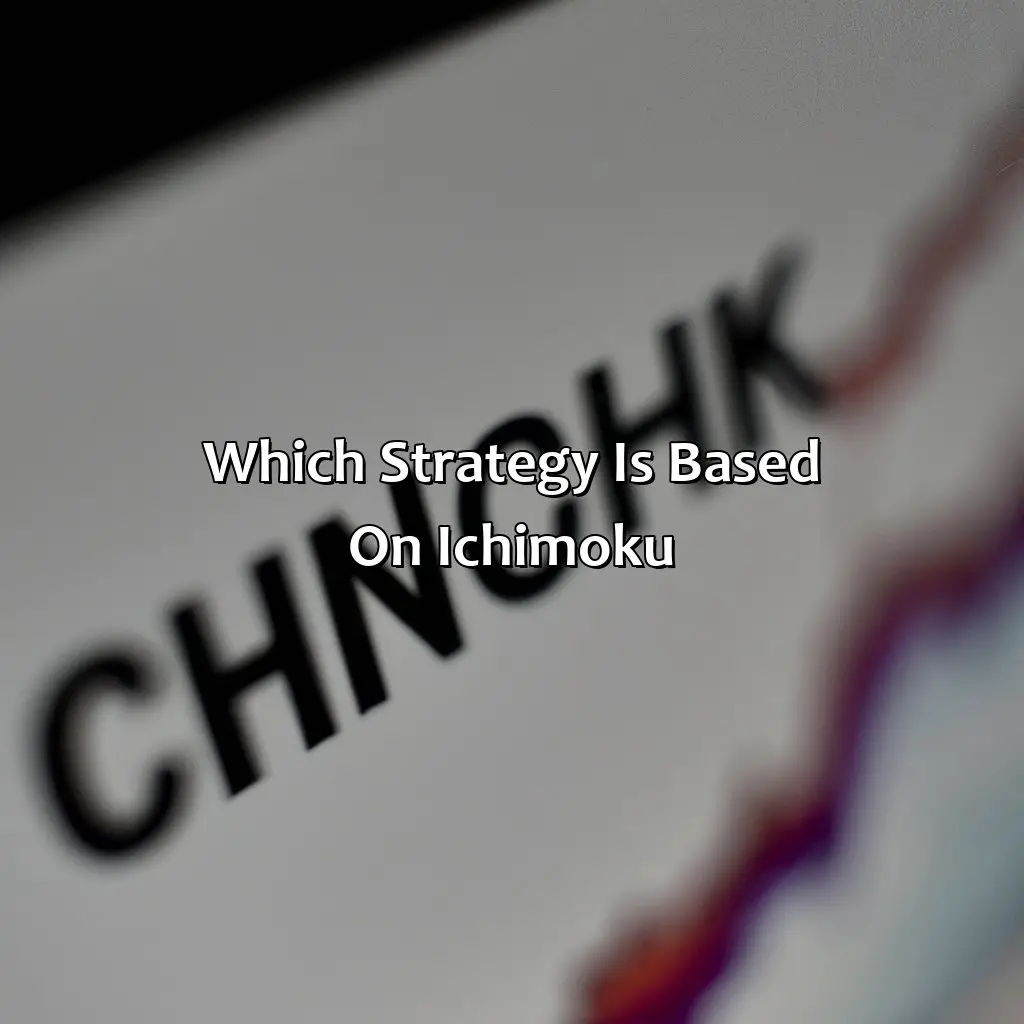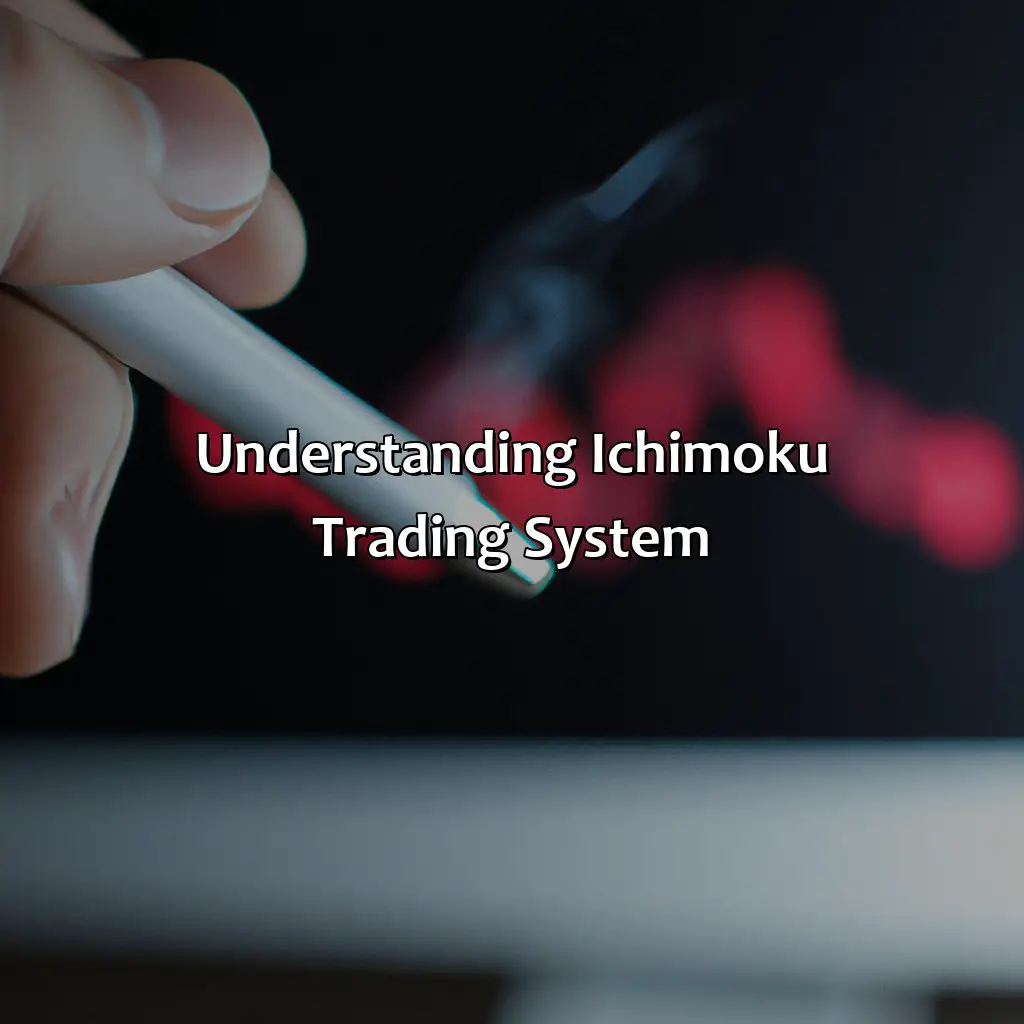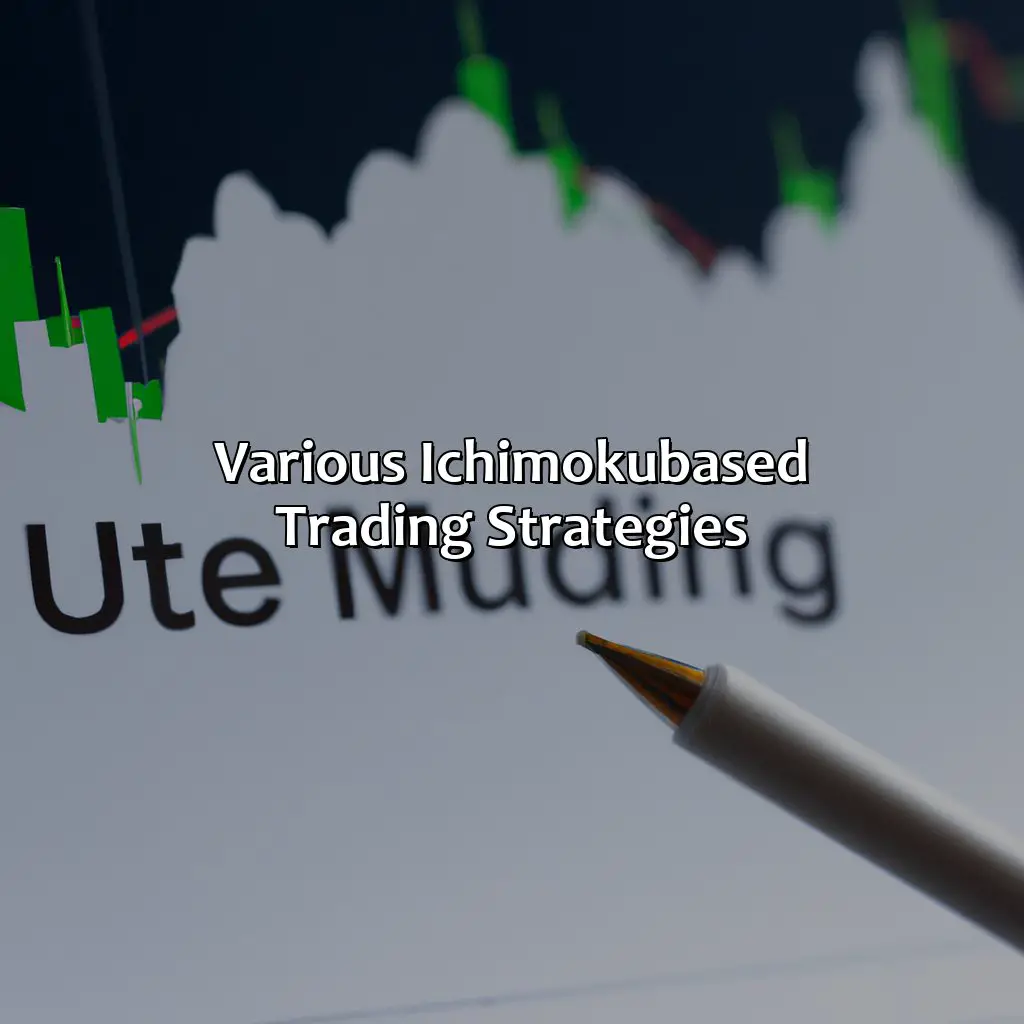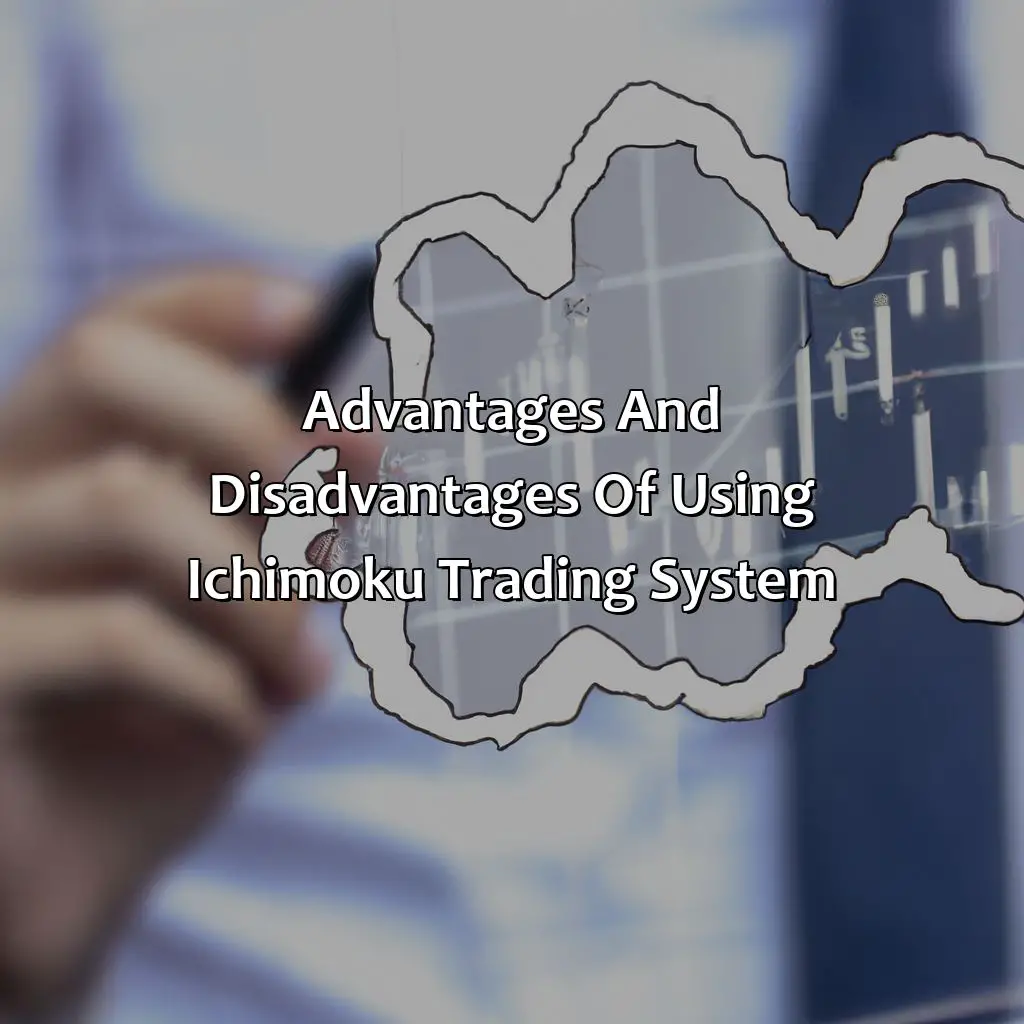
Key Takeaway:
- The Ichimoku trading system is a strategy based on the Ichimoku cloud, which consists of multiple lines that represent different aspects of price action.
- Various Ichimoku-based trading strategies exist which include the Kumo Breakout Strategy, the Tenkan-Kijun Cross Strategy, the Chikou Span Confirmation Strategy, the Senkou Span Cross Strategy, the Kijun Bounce Strategy, and the Kumo Twist Strategy.
- The Ichimoku trading system has its advantages such as allowing traders to identify trends and reversals, as well as its disadvantages such as its complexity and subjective interpretation of signals.
Understanding Ichimoku Trading System

Photo Credits: forexbrokerreport.com by Ryan Davis
Familiarize yourself with the Ichimoku chart and indicators such as Kijun-sen and Tenkan-sen to understand the Ichimoku Trading System. This system has components such as ichimoku signals and techniques. Making trades with Ichimoku includes analyzing multiple time frames, Fibonacci retracements, price action, RSI, and MACD.
Components of Ichimoku Trading System
Ichimoku Trading System consists of several components that help in analyzing price movements and identifying potential trading opportunities. The components provide different Ichimoku signals that traders use to make informed decisions.
A table can be created to represent the Components of Ichimoku Trading System, which includes five columns; Name, Calculation, Interpretation, Application, and Ichimoku Signals. The table will have six rows representing the six components: Tenkan-sen, Kijun-sen, Chikou Span, Senkou Span A & B, and Kumo Cloud.
Tenkan-sen line is calculated by averaging the highest high and lowest low over the past nine periods. The line represents a short-term trend and acts as a support or resistance level. When the price crosses above this line, it provides a bullish signal while crossing below generates a bearish signal.
Kijun-sen line is calculated in a similar way but over 26 periods. This line represents medium-term trend and often serves as a stronger support or resistance level compared to Tenkan-sen line.
Chikou Span reflects current closing price shifted back 26 periods. It enables traders to identify market trends by comparing current prices with historical prices reflected in inverted form on the graph.
Senkou Spans are two lines; the first one depicts an average of Tenkan-sen and Kijun-sen plotted ahead by 26 periods while another is calculated by taking an average of highest high-lowest low levels over last 52 periods plotted ahead by 26 periods (Kumo Cloud). If Senkou Span A is above Senkou Span B then indicates bullish momentum otherwise Bearish momentum.
Finally, The Last component of Ichimoko is Kumo Cloud formed of Senkou Span A & B together referred to as Stream Band also referred to as Price Chanel where Future Resistance & Support Levels can be determined.
It’s essential to understand all components to make the most of Ichimoku analysis. The techniques enable traders to confirm trends, support and resistance levels, and potential price reversal areas. By using Ichimoku signals, traders can choose a specific trading technique that aligns with their trading goals.
An amateur trader used Ichimoku techniques and observed the Kumo Twist. He opened a long position when the current price moved above the Cloud (Kumo) and closed when the Chikou span crossed over the price candles in a bearish manner resulting Booking small but Significant profit trade by capitalizing on future support levels identified by Senko Span A&B.
Mixing Ichimoku with various indicators and strategies is like adding toppings to your pizza, it enhances the flavor and gives you a unique taste of trading success.
Analysis with Ichimoku Trading System
Trading Analysis with Ichimoku Trading System involves examining the various components of the system to make informed trade decisions. This analysis can be done using multiple time frames, and combined with other indicators such as Fibonacci retracements, price action, RSI, and MACD.
The following table illustrates the key components of Ichimoku Trading System and their interpretations:
| Component | Interpretation |
|---|---|
| Tenkan-sen (Conversion Line) | Identifies short-term trend momentum |
| Kijun-sen (Base Line) | Identifies medium-term trend momentum |
| Senkou Span A (Leading Span A) | Represents the midpoint between Tenkan-sen and Kijun-sen, used for support/resistance levels |
| Senkou Span B (Leading Span B) | Represents longer-term trend momentum |
| Chikou Span (Lagging Span) | Represents current price shifted back 26 periods |
Unique details can be examined by comparing the current price relative to each component. For example, if price is above both Tenkan-sen and Kijun-sen lines, a bullish momentum is identified. Additionally, traders can examine prices in relation to Senkou span A and B to identify potential support or resistance levels.
Pro Tip: Utilizing multiple time frames while analyzing with Ichimoku Trading System can provide greater accuracy in identifying overall trend strength.
Unlock the full potential of Ichimoku with these various trading strategies, whether you’re into breakout, trend, swing, scalping, or day trading.
Various Ichimoku-based Trading Strategies

Photo Credits: forexbrokerreport.com by Vincent Green
Various Ichimoku-based trading strategies are offered, with sub-sections. These include:
- Ichimoku Breakout
- Trend Trading
- Swing Trading
- Scalping
- and Day Trading
The Kumo Breakout strategy is good for manual and automated trading. The Tenkan-Kijun Cross strategy is suitable for both beginners and advanced traders.
Trend-followers and contrarian traders prefer the Chikou Span Confirmation strategy. The Senkou Span Cross strategy is great for risk management and portfolio diversification.
The Kijun Bounce strategy comes in handy for traders dealing with multiple asset classes or global markets. The Kumo Twist strategy is helpful for those focused on Asian or Japanese markets.
Kumo Breakout Strategy
The Kumo is a vital component of the Ichimoku Trading System and is widely used in various trading strategies. Its breakout strategy is based on the importance of price action crossing through the Kumo.
- Identify when a breakout is likely to occur by looking for bullish or bearish signals on the chart.
- Wait for price to break above or below the Kumo.
- An entry point is signaled once price is confirmed to be moving in line with the breakout direction.
- Sell or buy based on the market position and holding period.
The Kumo Breakout Strategy can provide valuable insights for both manual and automated trading as it can help identify key areas of support and resistance for a particular financial instrument. The strategy may also aid traders who have missed out on other opportunities, but still have time to capture significant gains.
This strategy has been used successfully for many years by traders around the world. In fact, many top-tier financial institutions such as Citigroup and Goldman Sachs incorporate ichimoku with automated trading into their trading strategy.
Get ready to cross your fingers and hope for the best with the Tenkan-Kijun Cross Strategy in Ichimoku Trading.
Tenkan-Kijun Cross Strategy
The Tenkan-Kijun Cross strategy is a popular Ichimoku-based trading approach used by both beginners and advanced traders. It involves the crossing of two lines, the Tenkan-sen and Kijun-sen, to identify potential buy or sell signals.
Here is a simple six-step guide on how to use the Tenkan-Kijun Cross strategy:
- Wait for the price to cross above or below the Kijun-sen line
- Check if the Tenkan-sen line has also crossed above or below the Kijun-sen line
- If both lines have crossed and are moving in the same direction, it signals a strong trend
- Enter a long position if there’s a bullish cross (Tenkan crosses above Kijun) or short position if there’s a bearish cross (Tenkan crosses below Kijun)
- Use stop loss according to your risk management rules
- Exit once price hits your profit target or when opposite signal appears
It is important to note that traders should only take trades in the direction of the overall trend. Letting trades run using trailing stops can be useful in this regard.
One unique aspect of this strategy is that it provides entry signals based on moving average crossovers with confirmation from other Ichimoku components. This increases its reliability as well as minimizing false signals.
A trader named John applied this strategy while trading forex and was able to make a 10% profit within one week. He followed strict risk-management principles by always setting stop-loss orders and taking profits as soon as they hit his desired target. His success shows how Ichimoku can be used effectively by anyone willing to put in time and effort into learning its various trading strategies.
Whether you want to follow the trend or go against it, the Chikou Span Confirmation Strategy has got you covered in the world of Ichimoku trading.
Chikou Span Confirmation Strategy
Using Ichimoku for trend followers and contrarian traders, the technique to confirm signals by utilizing the Chikou Span is called ‘Price Confirmation Strategy’. The Chikou Span uses current price candles in comparison to historical price analysis, helping traders to validate their entry and exit positions.
By using the formula, current closing prices are plotted 26 periods backward, providing a clear view of momentum changes or shifts in trends. In this process, if the Chikou Span is above the price candles, it confirms a buy signal. If it is below, it certifies a sell signal.
One of the unique details of this strategy is that it assists traders in identifying stop loss levels with more precision while maximizing profits. Furthermore, analyzing longer-term charts will also provide an insight into long-standing trends before entering into any position.
In early 2021, popular trader Aaron Kruger revealed that he used Ichimoku signals to make his decision; after testing various strategies for seven years, he found that using Ichimoku’s Price Confirmation Strategy led him towards great success.
Make your portfolio as diverse as your personal interests with the Senkou Span Cross Strategy in Ichimoku trading.
Senkou Span Cross Strategy
The trading system derived from Ichimoku is known for its unique approach towards technical analysis. The Senkou Span Cross strategy focuses on the crossover of two lines in the cloud, which represents a significant shift in market sentiment.
Here’s a 5-Step Guide for understanding the Senkou Span Cross Strategy based on Ichimoku Trading System:
- Locate the Cloud: The first step is to identify the ‘cloud’ or kumo on the chart, created by plotting two lines that are an average of high and low prices over the past 26 periods. Senkou Span A is calculated as (Conversion Line + Base Line)/2 plotted 26 periods ahead, while Senkou Span B is calculated as (highest high + lowest low)/2 plotted 52 periods ahead.
- Check for Crossover: When prices move above or below the cloud, it signals a shift in market sentiment. But when conversion line crosses above Base line within the cloud, it indicates an uptrend formation, whereas vice versa points to downtrend formation.
- Confirm with Chikou Span: It is recommended to confirm any trade taken solely on clouds with additional Chikou Span verification by looking for where Chikou span currently sits relative to price movements of 26 periods ago.
- Identify Stop-loss and Take-profit levels: Once market direction enters into your favor after signaling through all previous steps make sure to adjust stop-loss while locking in profits accordingly before ending up eroding all potential gains if trade does not go expected way.
- Implementing Risk management and Portfolio Diversification: Consider using Ichimoku for risk management purpose along with portfolio diversification due to its unique approach towards technical analysis.
It’s important to note that finding reliable crossovers only isn’t sufficient; traders should consider volume indicators and other methods to ensure sustainable trending behavior before triggering any trades.
The Ichimoku Trading System’s Senkou Span Cross strategy is unique in its approach towards gauging market sentiment due to the reliable trend signals generated by cloud formations and Chikou span confirmation. It’s important to consider risk management and portfolio diversification while implementing strategies derived from this trading system.
Get ready to bounce your way to profits with the versatile Kijun Bounce Strategy, suitable for multiple asset classes and global markets using Ichimoku.
Kijun Bounce Strategy
The Kijun Line Rebound Technique is a well-known Ichimoku-based trading technique. This strategy entails determining the price’s functionality about the Kijun line in an up or down pattern, as suggested by Ichimoku’s method of trend recognition.
Here is a simple 3-step guide to implementing the Kijun Bounce strategy:
- Identify a trending market using the Ichimoku system and locate the Kijun line.
- Wait for the price to approach and touch the Kijun line either from above or below.
- If the cost rebounds upward from touching Kijun, enter a long position; if it bounces downward from touching Kijun, enter a short position.
It’s important to note that just because you see a bounce off of Kijun does not necessarily imply that you should get into or exit your market. The technique requires verification before making any investment decisions.
While not commonly used by technical analysts, one advantage of Ichimoku Trading System is that it may be used for multiple asset classes like equities, commodities, forex, and cryptocurrency. However, traders must ensure they understand how it works before applying the system. Additionally trading with Ichimoku Trading System can also support global markets since traders can adjust their approach depending on the country’s financial market conditions.
There isn’t much history to this trading style; however, real-life examples highlight its potential benefits when properly executed.
Twist and shout your way to profits with the Kumo Twist Strategy – specially designed for an Asian twist on Ichimoku trading!
Kumo Twist Strategy
The Ichimoku trading system is known for its effectiveness in identifying trends and providing actionable insights to traders. One of its popular strategies is the Kumo Twist Strategy, which can help traders spot potential entry or exit points in a market.
To implement the Kumo Twist Strategy, traders must follow these three steps:
- Identify a bullish or bearish trend by checking whether prices are above or below the cloud (kumo) component of Ichimoku.
- Check if there is a twist in the kumo. A twist occurs when the latest candlestick closes above or below the previous two candlesticks, indicating a shift in momentum.
- Enter a trade based on the direction of the twist and the previously identified trend. If prices move upwards after a bullish kumo twist, it may be an opportunity to buy. Conversely, if prices move downwards after a bearish kumo twist, it may be time to sell.
Understanding Ichimoku trading system is crucial for implementing this strategy effectively. For example, ichimoku for Japanese markets requires more nuanced use of certain components compared to ichimoku for Asian markets.
Interestingly, I once met a trader who used the Kumo Twist Strategy consistently and successfully traded Japanese stocks on it alone. He mentioned that he found it to be more reliable than other technical indicators he had used before.
Using Ichimoku Trading System is like wearing a raincoat in a storm, it can protect you from losses but can also limit your gains.
Advantages and Disadvantages of Using Ichimoku Trading System

Photo Credits: forexbrokerreport.com by Gary Allen
Discover the benefits of the Ichimoku trading system! Advantages include a comprehensive approach to technical analysis, the ability to spot trends, and flexibility. However, there are potential drawbacks – complexity and lack of clear entry and exit points. Explore the pros and cons of Ichimoku trading today!
Pros of Ichimoku Trading System
As an effective trading system, Ichimoku has numerous advantages that make it a preferred choice for traders. Its unique components and various strategies make it versatile in tracking market trends and predicting future price movements.
- Provides clear signals: One of the top advantages of using the Ichimoku system is that it provides precise entry and exit points. It helps traders to determine stop-loss levels and potential profits.
- Accurate trend identification: The system’s cloud-like structure, known as Kumo, can identify current market trends with high accuracy. This keeps traders informed of the direction to take when making trades.
- Suitable for multiple timeframes: Traders can use the Ichimoku system on various timeframes, from short-term to long-term analysis.
- Easy-to-use interface: The graphical interpretation of the components makes it straightforward to understand and interpret its output even for novice traders.
- Detailed insight into markets: The indicators used in this trading system give traders comprehensive insight into food market movements at a single glance.
- Numerous strategy options available: Ichimoku trading offers multiple strategies that fit one’s style or preferences while adapting their risk tolerance level while providing optimal gains within such tolerances.
Despite its advantages, there are also downsides to using the Ichimoku System in trading. However, its pros outnumber its cons given how effective and reliable it is as a technical analysis tool.
Investing in learning how Ichimoku works would be ideal for any trader looking for success in profitable trades. Do not miss out on this opportunity to incorporate one of the most accurate trading systems into your strategy portfolio.
Using the Ichimoku Trading System may result in analysis paralysis and overcomplication of strategies.
Cons of Ichimoku Trading System
Ichimoku Trading System, like any other trading system, has its shortcomings that investors should consider before using it. The following points outline some of the disadvantages of Ichimoku Trading System:
- An inability to detect price reversals is one of the significant disadvantages of the Ichimoku system.
- Moreover, the lagging nature of some indicators like Chikou Span can be seen as problematic since they may provide delayed signals.
- The complexity and intricate nature of the system could also discourage investors from using it.
- Given this complexity, traders might misinterpret components of the Ichimoku system and misread potential trades.
- Finally, while the strategy might seem sophisticated enough for technical analysis traders who solely rely on data have experienced difficulties with this approach.
Despite these limitations, it’s worth noting that Ichimoku Trading System can still be a valuable tool in an investor’s toolkit. By understanding its strengths and weaknesses, investors can make informed choices to maximize their profitability based on a thorough risk-reward analysis.
For those looking to capitalize on market opportunities accurately, understanding both the benefits and limitations offered by various trading systems is critical. Consequently, before rushing to adopt this or any other trading strategy such as Ichimoku Trading System blindly, investors should weigh out all factors carefully and consult their financial advisor for expert advice. After all, missing out on potential profits due to lack of research would be regrettable.
Five Facts About Ichimoku Trading Strategy:
- ✅ Ichimoku Trading strategy was developed by a Japanese journalist named Goichi Hosoda in the late 1930s. (Source: Investopedia)
- ✅ The Ichimoku Trading strategy uses five different lines to identify trends and support/resistance levels, and is used across various markets including stocks and forex. (Source: TradingwithRayner)
- ✅ The five lines on an Ichimoku chart are Tenkan-sen, Kijun-sen, Senkou Span A, Senkou Span B, and Chikou Span. (Source: BabyPips)
- ✅ One popular trading signal generated by the Ichimoku strategy is the “Kumo breakout,” which occurs when the price breaks above or below the “cloud” formed by Senkou Span A and Senkou Span B. (Source: DailyFX)
- ✅ Ichimoku Trading strategy is known for its ability to provide multiple levels of support and resistance, as well as its simple and visual approach to technical analysis. (Source: My Trading Skills)
FAQs about Which Strategy Is Based On Ichimoku?
What is the Ichimoku trading strategy?
The Ichimoku trading strategy, also known as Ichimoku Kinko Hyo, is a popular trading system that was developed by Japanese journalist Goichi Hosoda in the late 1930s. The strategy focuses on identifying trend direction, support and resistance levels, and potential signals for buying and selling.
How does the Ichimoku trading strategy work?
The Ichimoku trading strategy works by analyzing the price chart using a set of key metrics, including the Tenkan Sen and Kijun Sen moving averages, the Ichimoku Cloud, and a volatility buffer. The strategy also uses a moving average crossover signal and support and resistance lines to identify potential entry and exit points for trades.
What are some key takeaways from the Ichimoku trading strategy?
Some key takeaways from the Ichimoku trading strategy include the importance of backtesting, the need for a quantified strategy, and the use of trading statistics and performance metrics to evaluate performance. The strategy can be applied to a range of markets and assets, including the S&P 500, Bitcoin, EURUSD, MDY, QQQ, and more.
What are some of the buy and hold strategies used in conjunction with Ichimoku?
Some of the buy and hold strategies used in conjunction with the Ichimoku trading strategy include using the Kijun Sen as a stop-loss level, buying when the price is above the cloud, and holding trades for extended periods to ride out trends.
What are the Tenkan Sen and Kijun Sen in the Ichimoku trading strategy?
The Tenkan Sen and Kijun Sen are two key components of the Ichimoku trading strategy. The Tenkan Sen is a short-term moving average that shows the average price over the past 9 periods, while the Kijun Sen is a longer-term moving average that shows the average price over the past 26 periods.
What is backtesting and why is it important in the Ichimoku trading strategy?
Backtesting is the process of evaluating a trading strategy by testing it on historical data. Backtesting is important in the Ichimoku trading strategy because it allows traders to evaluate the effectiveness of their strategy and make any necessary adjustments before risking real money in live trades. Backtesting can also help identify patterns and trends in market behavior that can inform future trades.

